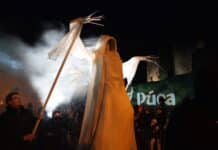An Irish giallo, indeed? A razor-wielding, acid-throwing killer is at large in Dublin. RICHARD PHILLIPS-JONES looks at the suspects in The Iguana With The Tongue Of Fire.
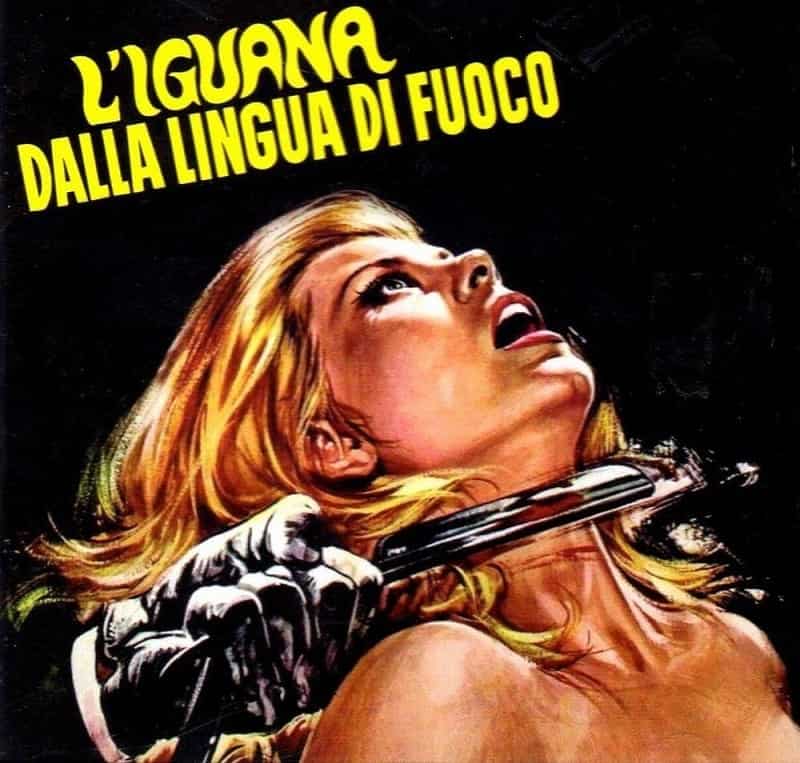
TITLE: The Iguana with the Tongue of Fire aka L’iguana dalla lingua di fuoco
RELEASED: 1971
DIRECTOR: Willy Pareto (pseudonym for Riccardo Freda)
CAST: Luigi Pistilli (Detective John Norton), Dagmar Lassander (Helen Sobiesky), Anton Diffring (Ambassador Sobieski), Arthur O’Sullivan (Inspector Lawrence), Werner Pochath (Marc Sobiesky), Dominique Boschero (Ambassador’s Mistress), Valentina Cortese (Mrs. Sobiesky)
The Iguana With The Tongue of Fire 1971 Review
We open on the streets of Dublin in 1971. It’s the kind of opening sequence familiar to giallo fans: characters from the forthcoming story and their vehicles making their way around the setting of the tale, establishing the locations and the feel of the city.
This, however, is not the usual locale one might expect. Giallo protagonists are often first glimpsed driving their Alfa Romeos and Fiats around Rome, and it’s refreshing to see the likes of the Ford Cortina and the Reliant Scimitar instead, moving through Dublin at rush hour.
Such travelogue-tinged shots soon give way to the event which kicks off proceedings in this Irish/Italian/Spanish/German co-production: A razor-wielding killer brutally murders a woman at her home, throwing acid in her face for good measure.
The unfortunate lady’s body turns up in the boot of a limo belonging to Swiss ambassador Sobieski. Another killing occurs soon afterwards: A nightclub singer, the ambassador’s mistress is slain in her dressing room.
For reasons not entirely clear, the Gardaí enlist ex-officer John Norton to deal with the case, and he quickly complicates matters by starting an affair with the ambassador’s step-daughter, Helen.
Further killings follow, as members of the Sobieski family are targeted, along with those they are associated with. Things also move closer to home, as Norton’s mother and daughter appear to be under threat. Even a family pet isn’t safe.
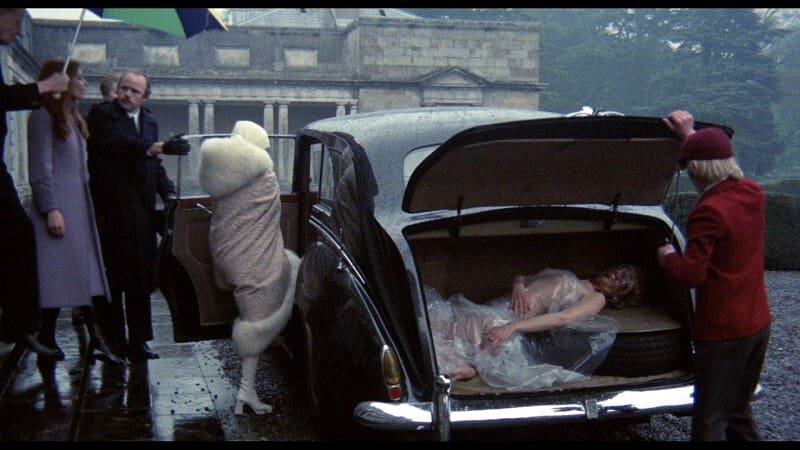
in The Iguana With The Tongue Of Fire (1971)
The link between the murder suspects is dark glasses, as seen on the killer. The ambassador keeps a pair, while his chauffeur wears some due to conjunctivitis, but they may not be the only candidates.
If all of this seems a little confusing… well, even in a genre that thrives on convoluted plots and frequently tripping up the audience, L’iguana dalla lingua di fuoco (as the Italians say) takes some beating in the mind-boggling stakes.
Director Riccardo Freda was clearly capable of making a half decent horror/thriller picture: for evidence, see his Barbara Steele-starring The Horrible Dr. Hichcock (1962). That makes it all the more perplexing that this production is such a mess.
It’s worth noting that Freda was so disappointed by the outcome that he took his name off the credits, while its German financier was so nonplussed, they decided not to release the film domestically. So, what exactly went wrong?
One could point the finger at the jumbled and nonsensical script, of which the following exchange of inane dialogue only scrapes the tip of the iceberg. After the first victim’s body has been discovered in the back of the ambassador’s car:
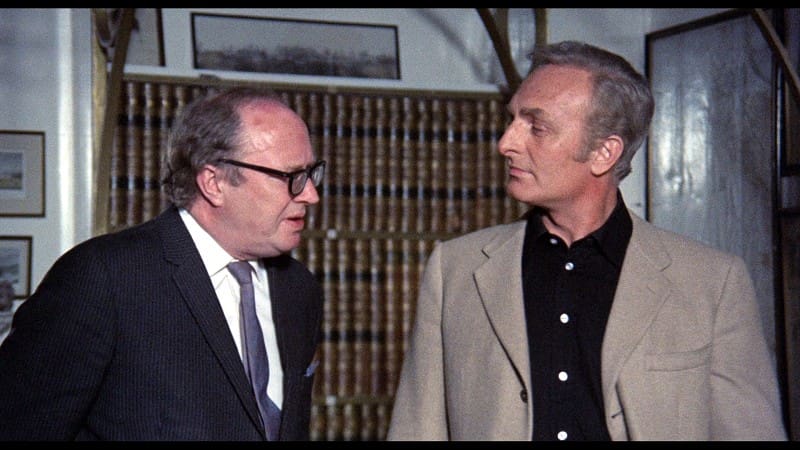
INSPECTOR: There’s a question I should like to ask you. Did you know that woman?
(long pause)
AMBASSADOR: Which woman?
INSPECTOR: I meant the one… the one that was in –
AMBASSADOR: Oh, the one that was in the luggage boot of my car.
Yes, you get the idea. The English-language dub of The Iguana with the Tongue of Fire doesn’t help matters. Of the Irish characters, some are furnished with clipped English accents while others seem to randomly veer in and out of half-hearted attempts at an Irish brogue.
Even without the hampering of the final dub, most of the cast look as utterly bemused as the viewer, as though they’re not entirely sure what they’re doing there. The ever-reliable Anton Diffring gives the impression of a man who has quickly read his smattering of dialogue, delivered it as quickly as possible and then wisely legged it back to his French chateau, cashing the cheque en route before the production budget runs out.
The producers have evidently lavished some expense on location shooting in Ireland, so much so that only a few punts seem to have been left to knock together some body gore effects in someone’s kitchen with uncooked pastry, raspberry sauce and some mannequin heads. The final edit seems to have been so hurried that it often feels like a rough workprint is being viewed rather than a finished product.
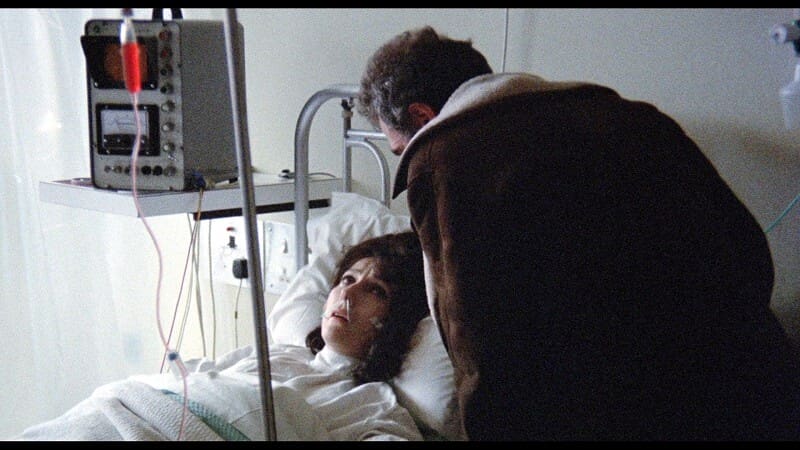
Somewhere, deep inside this farrago is a pretty decent giallo trying to get out, but it stands no chance against such massive odds. Still, for devotees of the giallo form, The Iguana With The Tongue Of Fire is an interesting, if frustrating early attempt to capitalise on the success of Dario Argento’s The Bird With The Crystal Plumage (1970).
The stretches of tedium are relieved by tantalising glimpses of what could have been, and the massive (if wasted) bonus of its unusual Dublin setting make it a fascinating timepiece for Irish viewers. However, those seeking a prime example of the genre should look elsewhere.
TRIVIA POINTS: Riccardo Freda later claimed that he wanted Roger Moore for the lead for The Iguana with the Tongue of Fire. Luigi Pistilli was eventually cast shortly before production began.
In considering the English dubbing, it should in fairness be remembered that many films in the giallo cycle were shot without synchronised sound. Dialogue was generally only added in post-production, and frequently not by the same performers that appeared on-screen.
It is unclear whether the film was shown publicly in Ireland at the time, although this seems unlikely due to censorship issues. It was eventually screened at the Dublin Horrorthon in 2008.
Did you enjoy Iguana With The Tongue Of Fire? Tell us in the comments section below!




